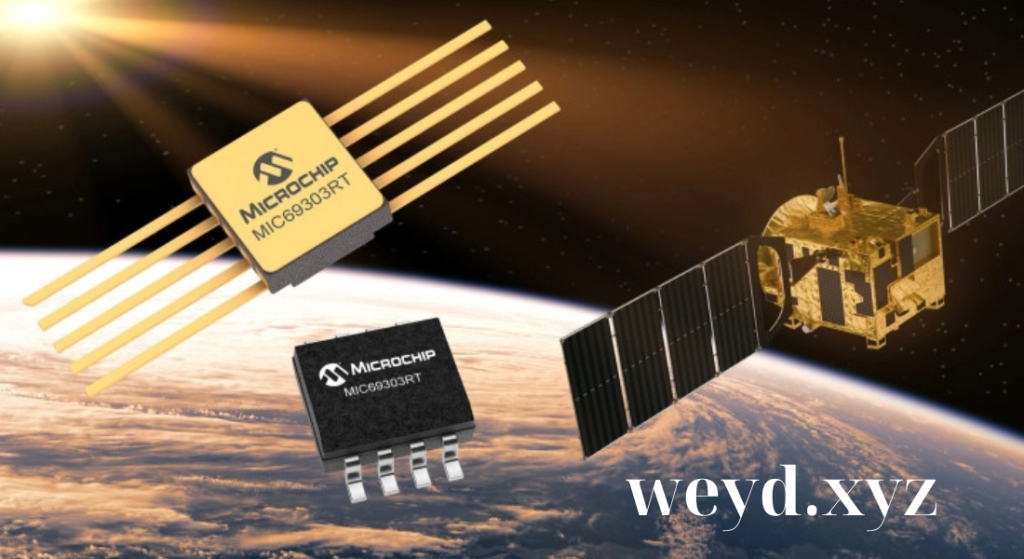Blog
Optimizing Microchip Power Management: Key Techniques and Technologies
Introduction
In today’s technology-driven world, microchips are essential in powering almost every digital device, from smartphones to industrial machines. However, with growing demand for high-performing, energy-efficient devices, the concept of microchip power management has become more critical than ever. Efficient power management in microchips not only prolongs battery life but also enhances device performance and durability. This article explores key concepts, techniques, and technologies in microchip power management, providing insights into how it impacts modern devices and why it’s essential.
Understanding Microchip Power Management
Microchip power management refers to the strategic handling of power consumption within microchips to optimize energy use. Power management in microchips involves controlling voltage, current, and power distribution to ensure that each component operates at its best efficiency. This process is especially important for portable and battery-operated devices where limited power resources demand optimal energy use.
Key Benefits of Microchip Power Management
- Extended Battery Life
By efficiently managing power usage, microchips help in significantly extending battery life, crucial for portable devices like smartphones and wearables. - Enhanced Device Performance
Effective power management ensures stable power delivery, improving device reliability and performance. - Reduced Heat Generation
Power management in microchips prevents overheating, reducing the risk of hardware failure and improving user safety. - Environmental Impact
Lower power consumption leads to reduced energy demand, contributing to eco-friendly technology and lowering device carbon footprints.
Core Components of Microchip Power Management
1. Voltage Regulators
Voltage regulators are essential components in microchip power management systems. They maintain stable voltage levels across the device, ensuring optimal power distribution to all microchip components. This stability is crucial for preventing voltage fluctuations that could damage sensitive electronic parts or lead to inefficient operation. There are different types of voltage regulators, including linear regulators and switching regulators, each suited for specific applications.
2. Power Switches
Power switches play a vital role in microchip power management by controlling the flow of electricity to specific parts of a device. These switches allow for selective power distribution, enabling the device to turn off or reduce power to inactive areas when not in use. This selective approach not only conserves energy but also extends battery life, which is especially important for portable and battery-operated devices. Furthermore, modern power switches are designed to operate quickly and efficiently, minimizing the energy wasted during transitions.
3. Power Amplifiers
Power amplifiers are critical in microchip power management as they boost signal strength, which is crucial for devices requiring high processing power and clear communication. These amplifiers are essential in applications such as wireless communication, audio systems, and signal processing. Managing the power in amplifiers is essential for balancing performance and energy usage; an efficiently designed amplifier maximizes output while minimizing power consumption. Advanced power management techniques, such as dynamic power adjustment and thermal management, are often integrated with power amplifiers to ensure optimal operation under varying loads.
Techniques in Microchip Power Management
1. Dynamic Voltage and Frequency Scaling (DVFS)
DVFS adjusts the voltage and frequency of a microchip based on real-time performance requirements. It optimizes energy use by lowering power consumption during low-demand activities and increasing it only when high processing power is necessary.
2. Power Gating
Power gating is a technique where certain parts of a microchip are powered down when not in use. It conserves energy by isolating inactive parts of the circuit, allowing devices to run longer on a single charge.
3. Low Power Design Architecture
Designing low-power architectures involves building energy-efficient circuits and systems. These designs incorporate smaller transistors and optimized layouts that reduce overall power consumption without compromising performance.

Advanced Technologies in Microchip Power Management
1. Energy Harvesting
Energy harvesting technology enables microchips to draw power from their surroundings, such as solar, thermal, or vibration sources. While still in its development phase, energy harvesting holds great potential in microchip power management for devices like IoT sensors that require minimal energy.
2. Adaptive Power Management
Adaptive power management systems adjust energy distribution dynamically based on environmental and operational conditions. This technology is beneficial for devices with varying workload demands, like smartphones and laptops, as it enables them to operate efficiently under different conditions.
3. Artificial Intelligence (AI)-Based Power Management
AI is playing an increasingly significant role in microchip power management. AI algorithms predict power requirements, adjusting voltage and frequency automatically to maintain efficient energy use without user intervention.
Real-World Applications of Microchip Power Management
1. Mobile Devices
Efficient power management in microchips extends battery life in mobile devices, allowing users to operate their smartphones, tablets, and wearables for longer periods without frequent recharging.
2. Automotive Industry
In electric and autonomous vehicles, microchip power management is crucial for battery longevity and efficient energy use, impacting vehicle range, safety, and performance.
3. Healthcare Devices
Medical devices such as pacemakers and insulin pumps rely on microchip power management to operate continuously with minimal energy. Power-efficient microchips ensure these life-saving devices function reliably.
Future Trends in Microchip Power Management
1. 5G and Microchip Power Management
The rise of 5G technology has significantly amplified the need for efficient microchip power management due to increased data processing and connectivity demands. As 5G networks deliver faster speeds and higher data volumes, microchips must adapt to handle this complexity. Advanced microchips designed specifically for 5G incorporate innovative power management techniques that ensure energy-efficient, high-speed connectivity. These techniques include Dynamic Voltage and Frequency Scaling (DVFS) and advanced sleep modes, which allow chips to conserve power when not actively processing data.
2. Integration of Nanotechnology
Nanotechnology is revolutionizing microchip design by enabling chips to be smaller and more power-efficient. This integration allows for new approaches to power management that significantly enhance microchip performance. Nanotech-driven microchips can execute complex tasks while requiring less energy, positively impacting various sectors, including consumer electronics, automotive, and industrial machinery. For instance, nano-scale transistors enable faster switching speeds and lower energy consumption, contributing to the overall efficiency of the device.
3. Quantum Computing Power Management
Quantum computing presents unique challenges for power management due to its high processing demands and intricate operations. As the field of quantum computing advances, the need for ultra-efficient power management systems becomes paramount. Emerging systems designed for quantum microchips aim to balance performance with sustainable energy use, ensuring that these powerful computing devices operate efficiently. Techniques such as adaptive power management and thermal regulation will play a crucial role in optimizing energy consumption in quantum processors.
Conclusion
Microchip power management is a foundational element in modern electronic device design, enabling energy-efficient, high-performance solutions for a variety of applications. From mobile devices to the automotive and healthcare sectors, power-efficient microchips enhance functionality, reduce environmental impact, and ensure reliable device operation. As technology advances, microchip power management will continue to evolve, adapting to emerging demands in connectivity, processing, and sustainability.


